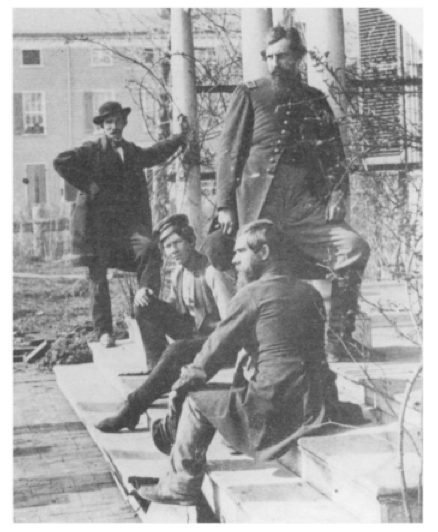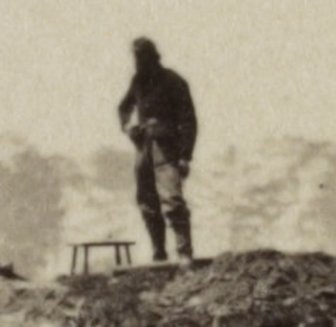THE PETERSBURG PHOTOGRAPHS
Andrew J. Russell
|
Andrew Joseph Russell was a photographer for the Army at Petersburg. He was born in Walpole, New Hampshire, March 20, 1829, and raised in upstate New York. He trained as a portrait artist and attained some local recognition painting political portraits and landscapes. Before the war, he opened an art studio in New York City and painted stage sets. When the war came, he painted a battle diorama to serve as a back drop for enlistment rallies. In August 1862, Russell returned to Steuben County, New York, to raise a company of infantry to which he was elected captain. The unit mustered in as Co. F, 141st New York Infantry, August 22, in Elmira, New York. In February 1863, the 141st was assigned to the defenses of Washington, where Capt. Russell met photographer Egbert G. Fowx who was working for the Military Railroad. Fowx took Russell on as his assistant and taught him the fundamentals of wet-plate photography. When Brig. Gen. Daniel C. McCallum was placed in charge of U. S. Military Railroad operations in Virginia, he relied on Fowx, Russell, and others to document his engineering efforts, including bridge construction, salvage, defenses, and railroad facilities, such as the roundtables in Alexandria, Virginia. Fowx and Russell also photographed quartermaster facilities, such as the bakeries, mills, and wharves at Alexandria, and the extensive cavalry remount center at Giesboro, Maryland. Russell was the only uniformed military photographer who served in an official capacity during the war. One of his more famous photographs were taken at Fredericksburg, Virginia, was of the Confederate dead behind the stone wall at Fredericksburg, taken in May 1863 during the Chancellorsville Campaign. The Library of Congress collection includes nearly 350 Civil War images attributed to Russell. Many Russell photographs remain unattributed.
In "Richmond Taken Again," an article in The Virginia Magazine of History and Biography (2002, Vol. 110, No.4), Susan E. Williams provides one of the best summaries of Russell's life and Civil War career, drawing upon military records in the National Archives. |
|






